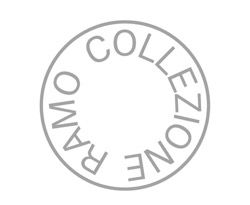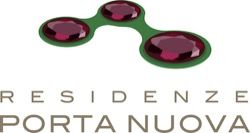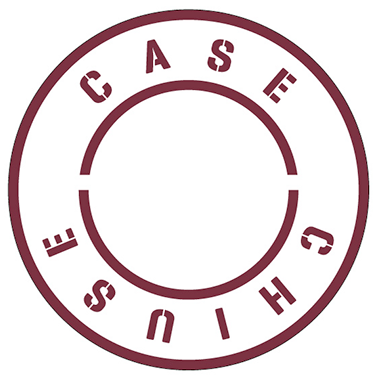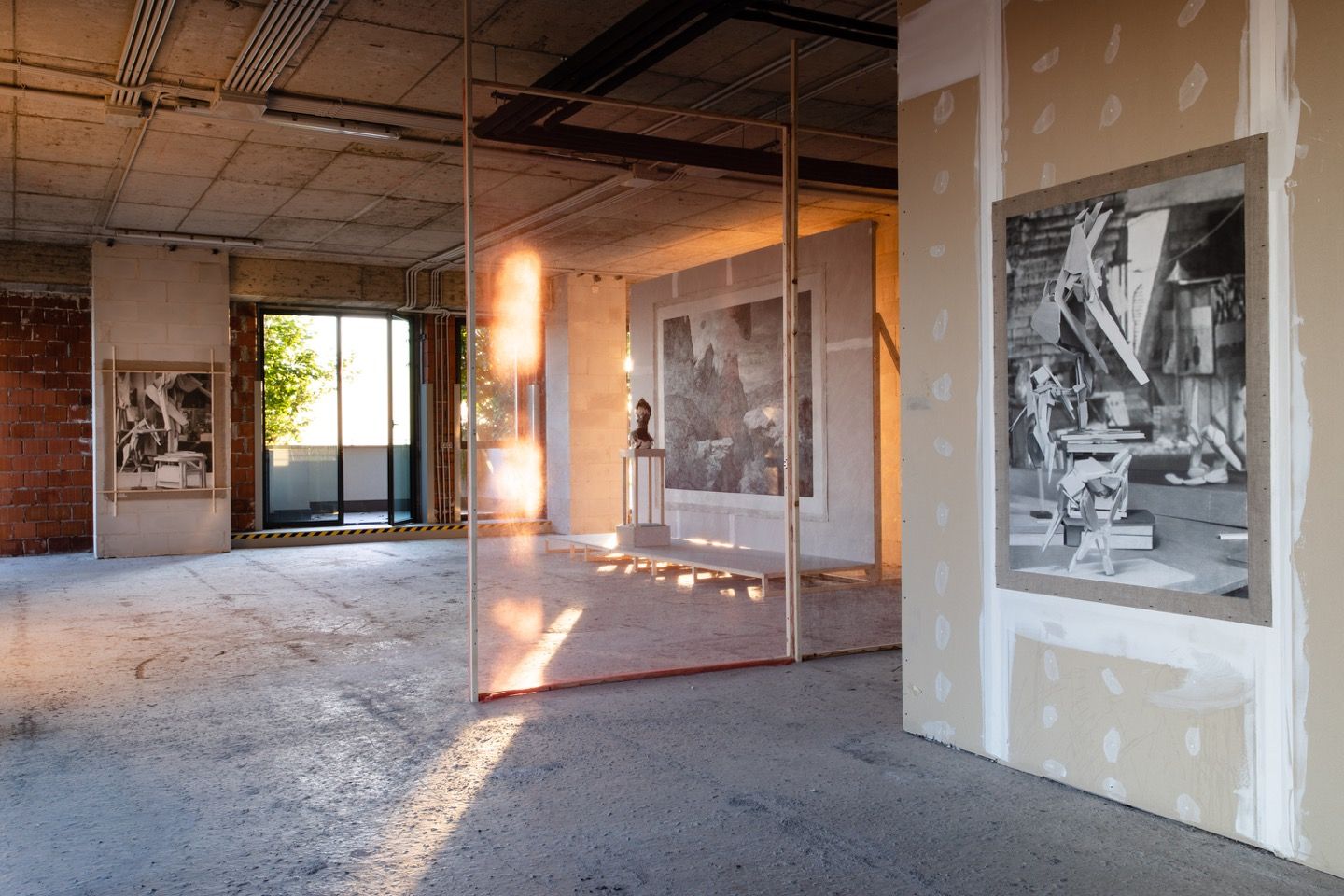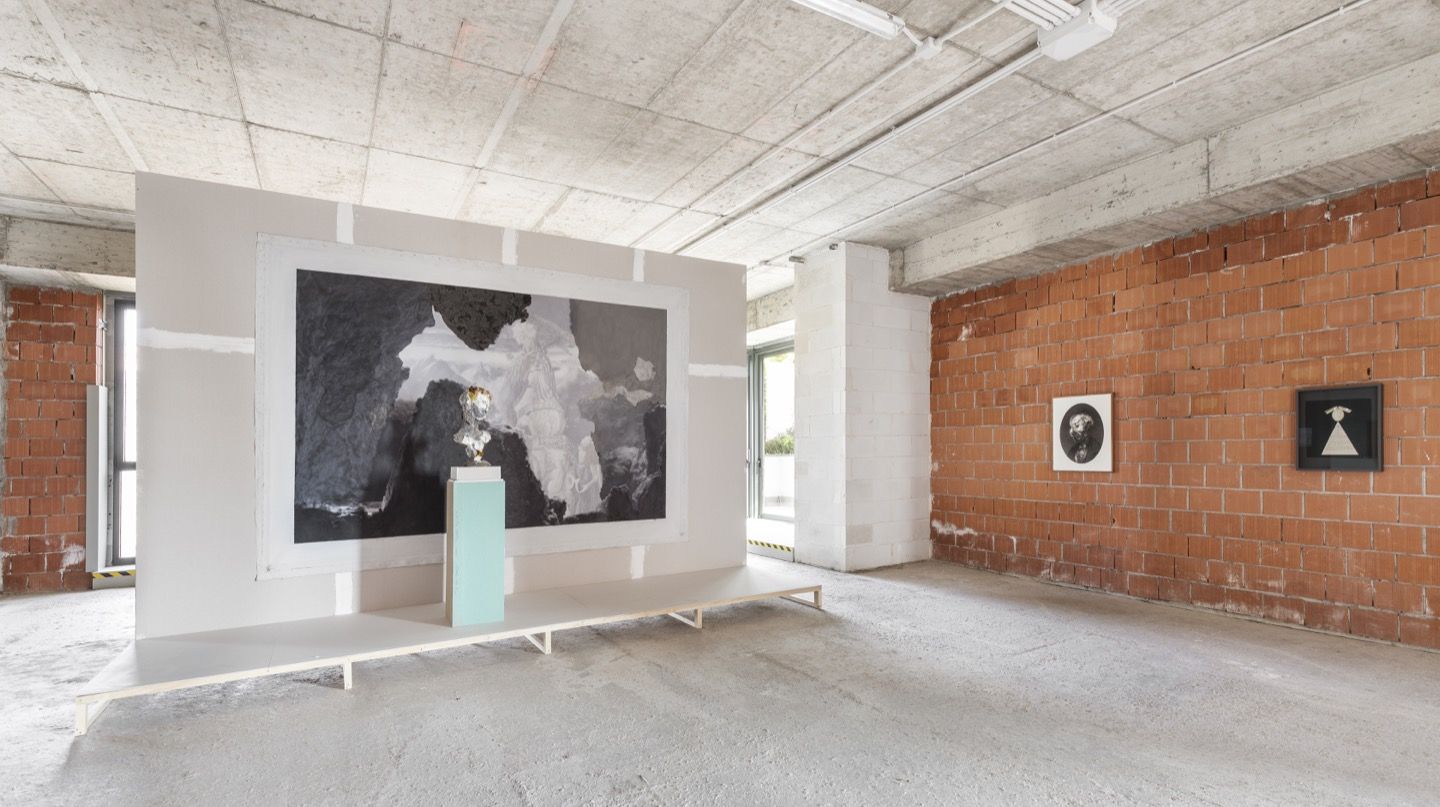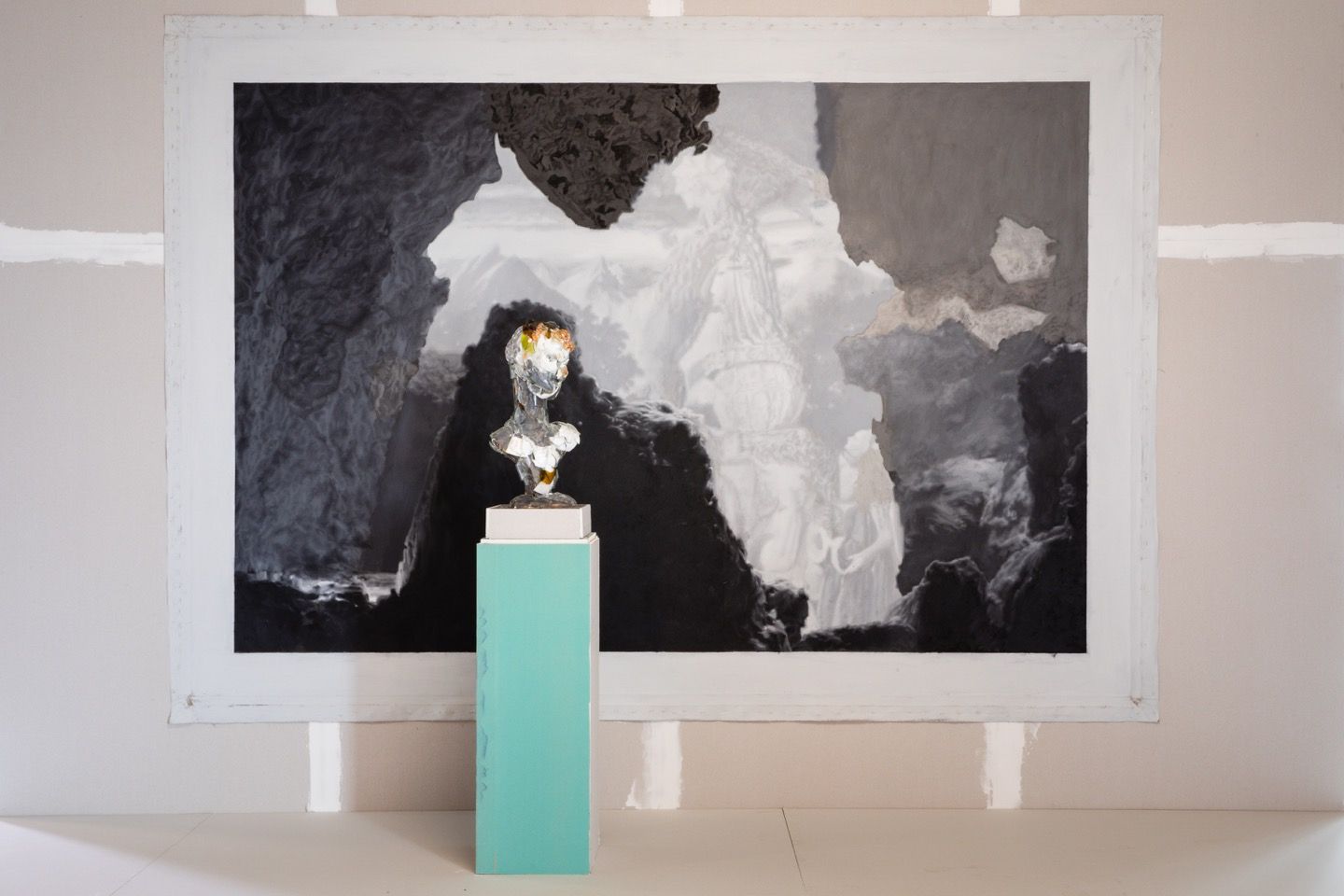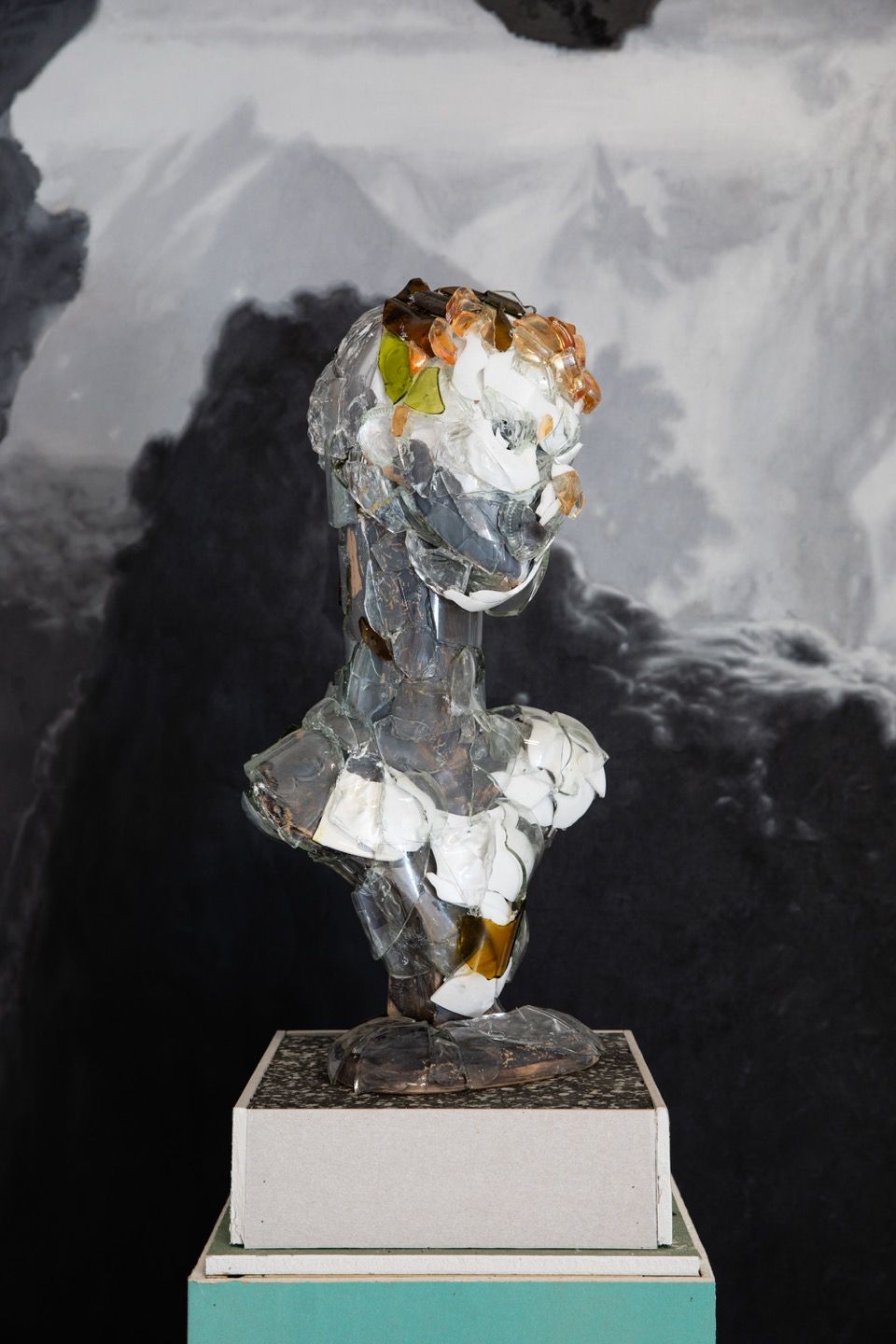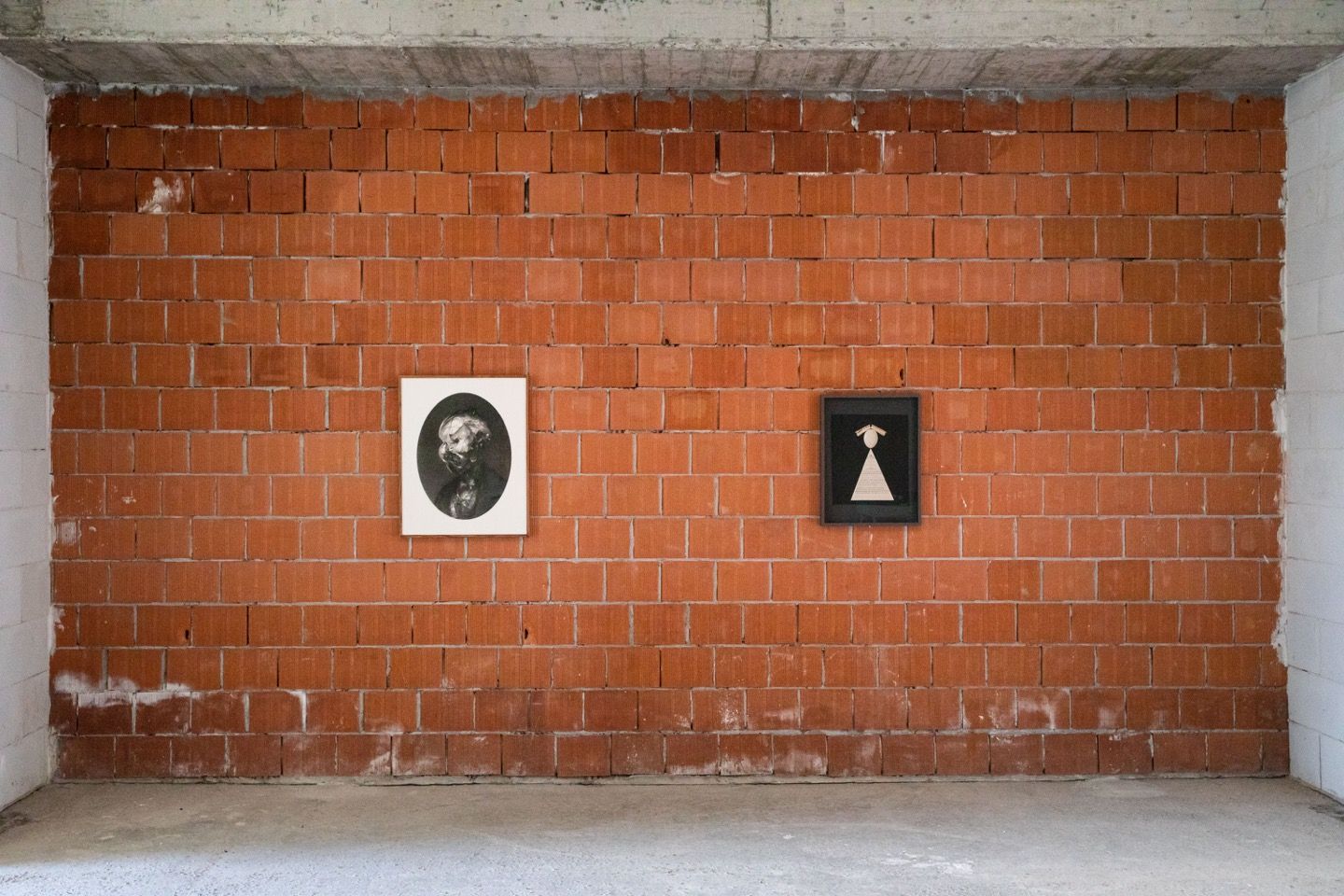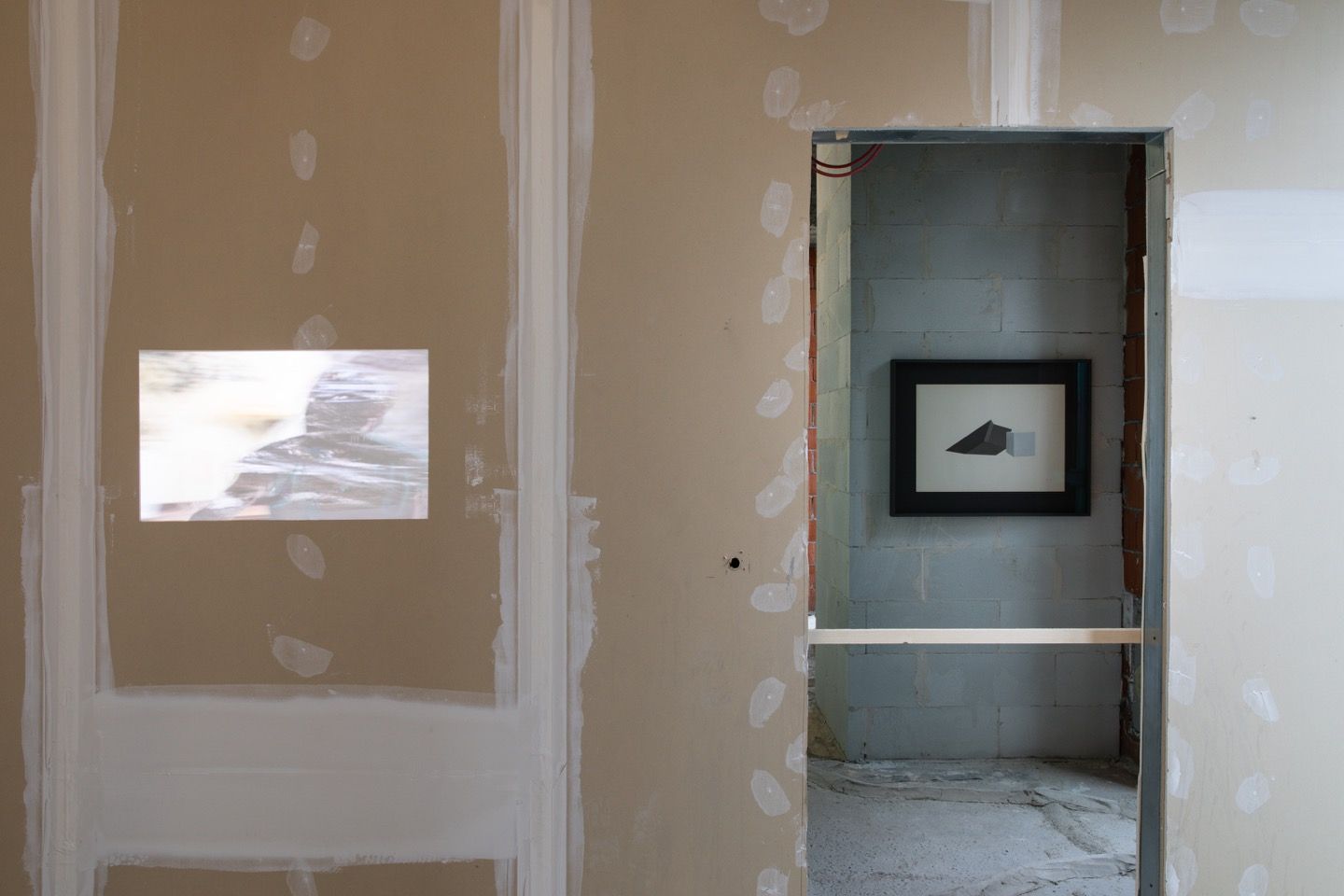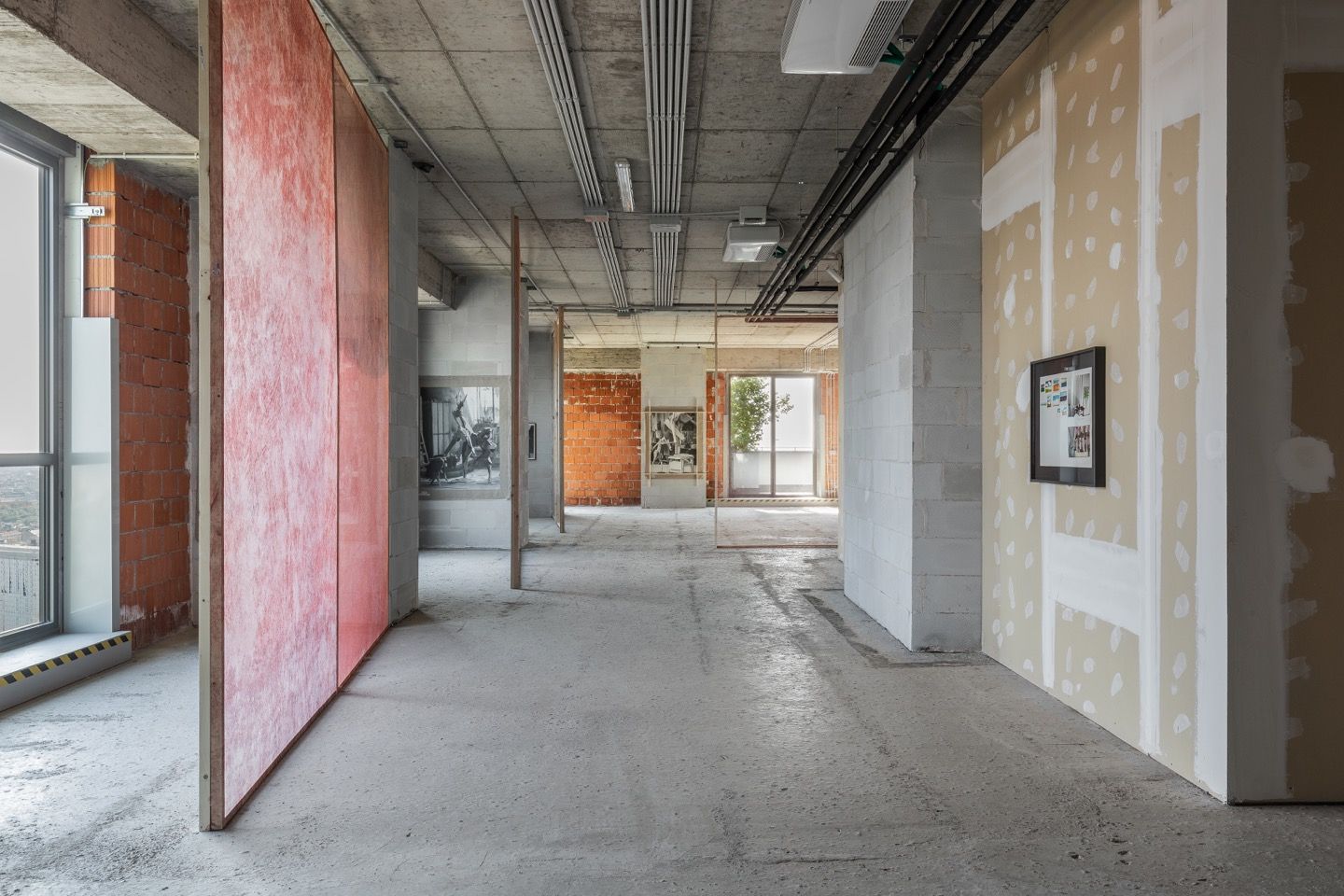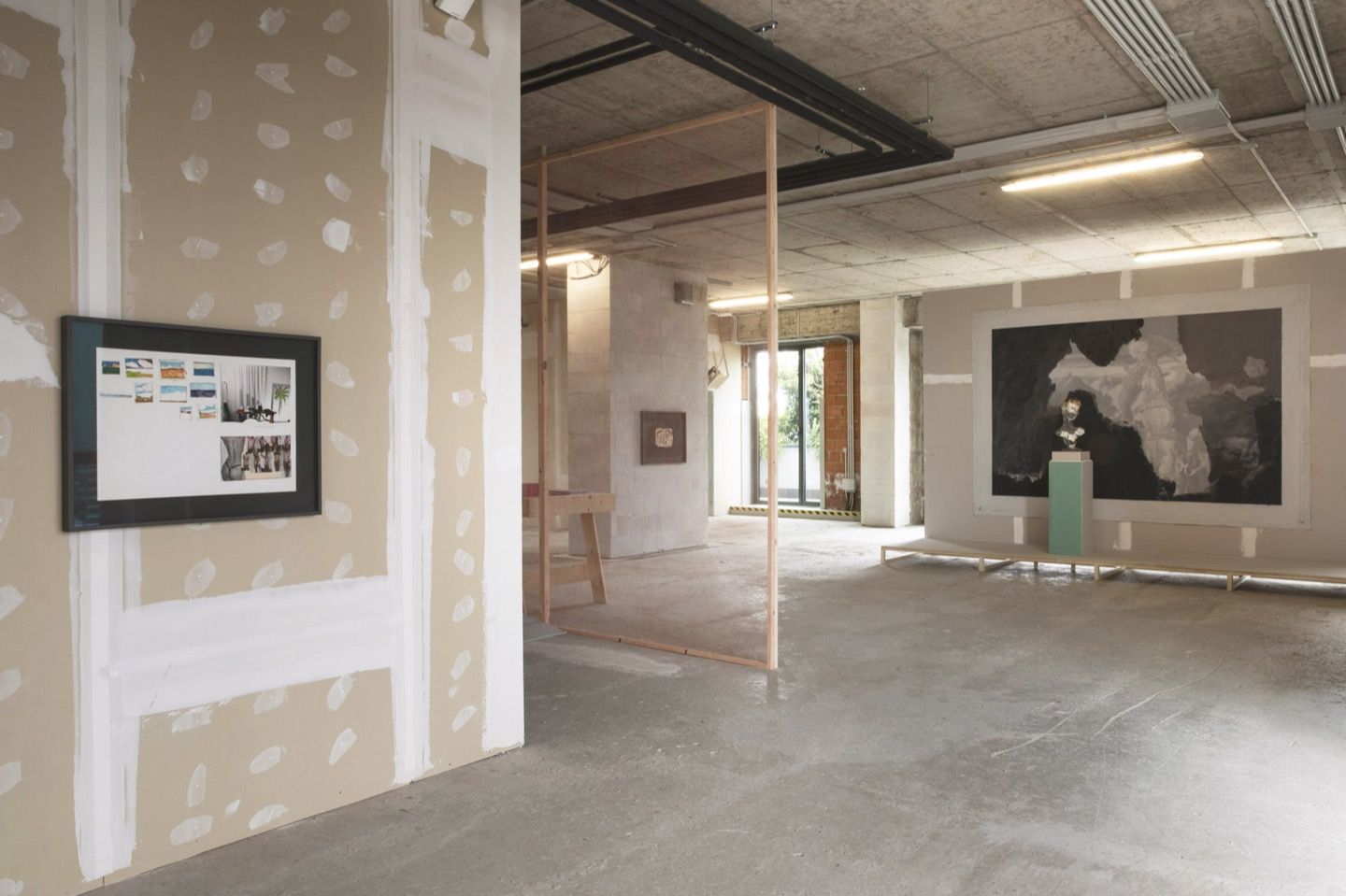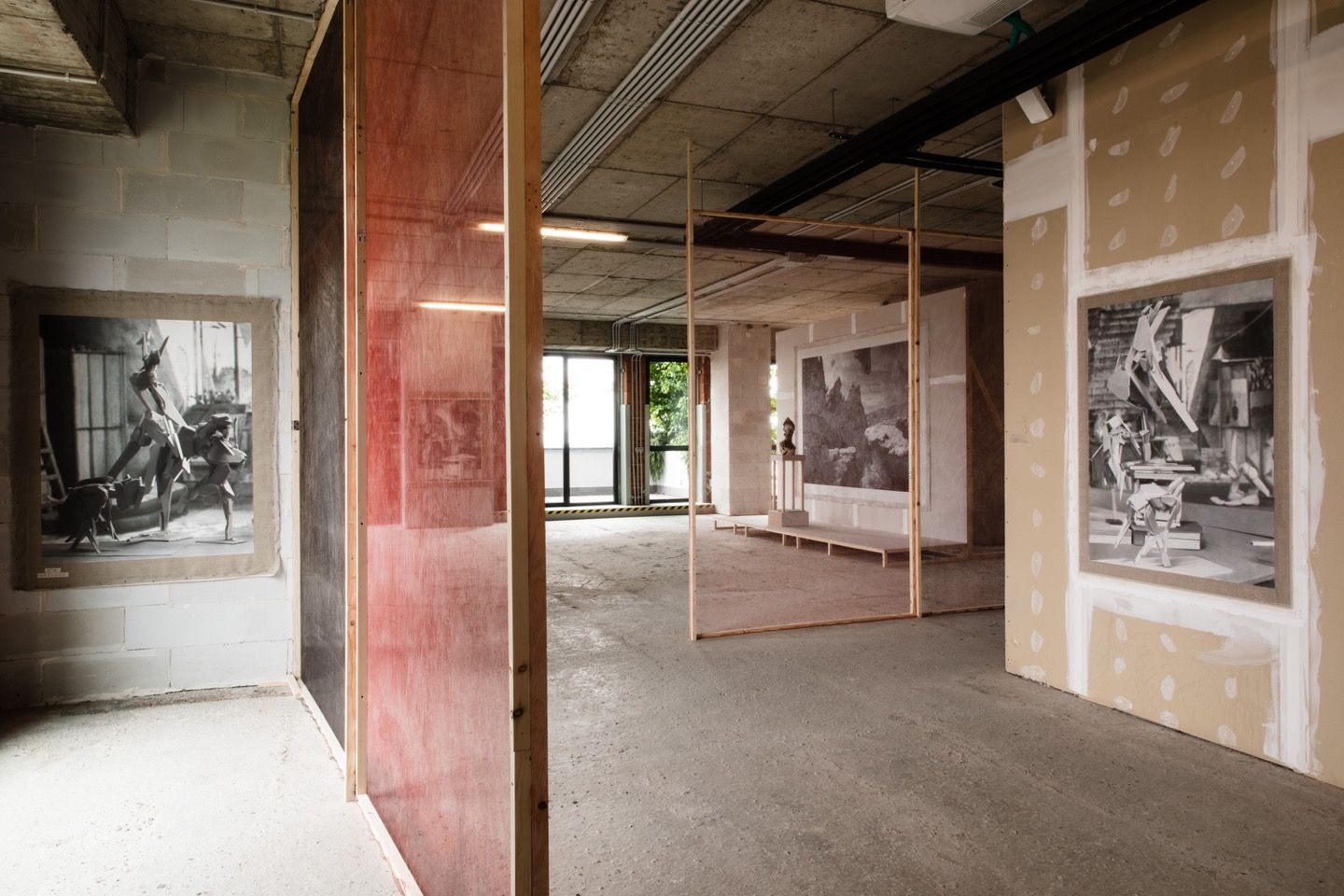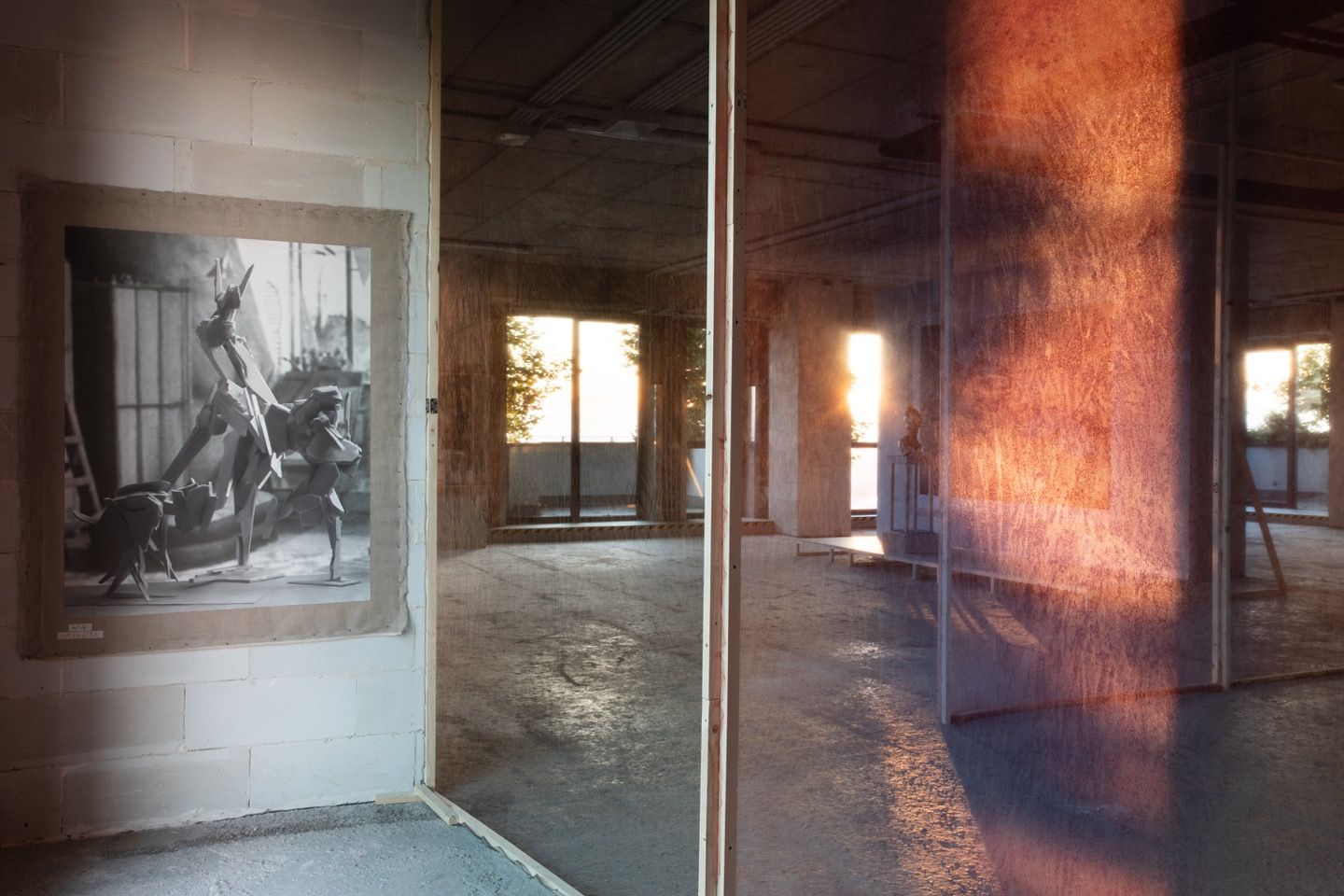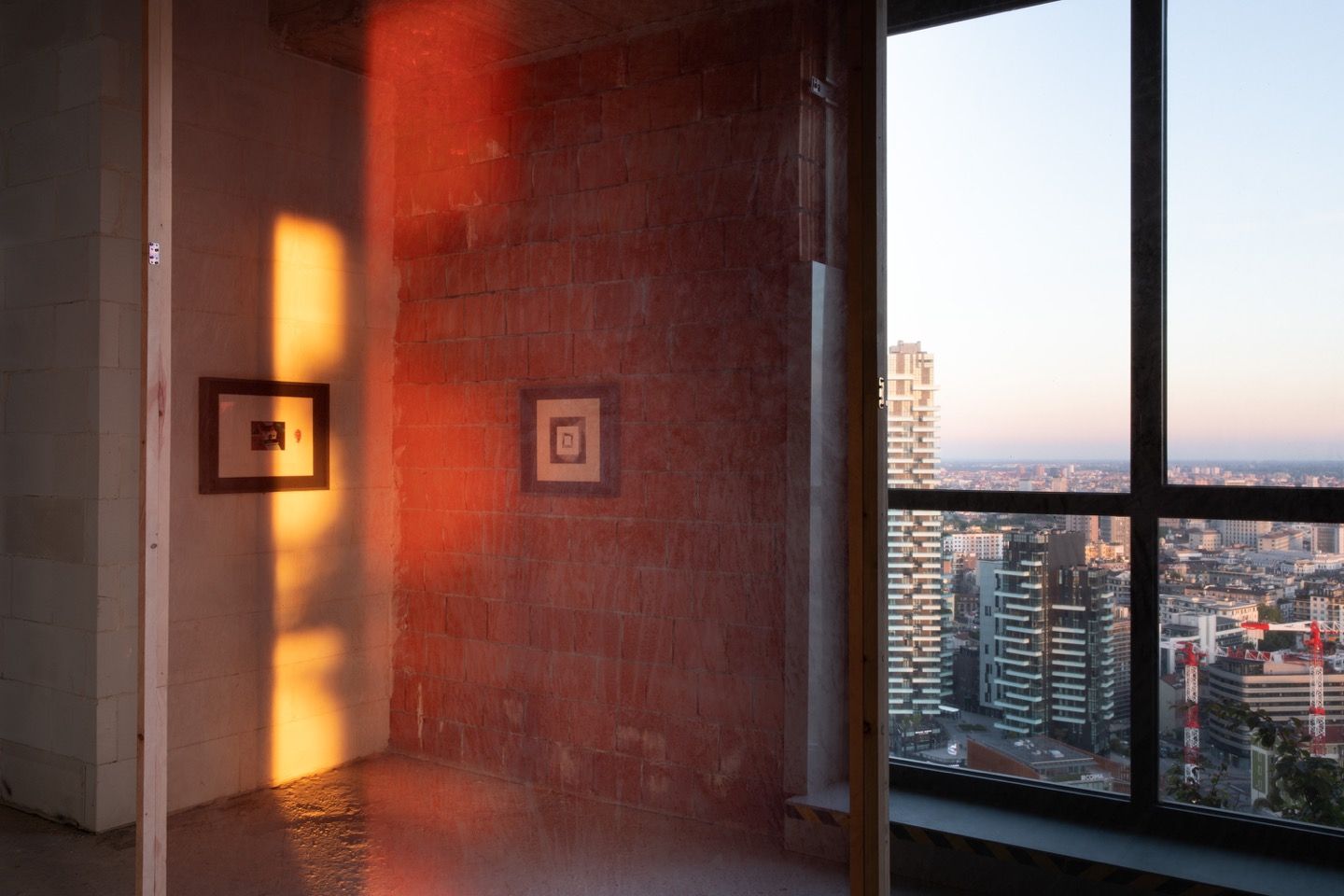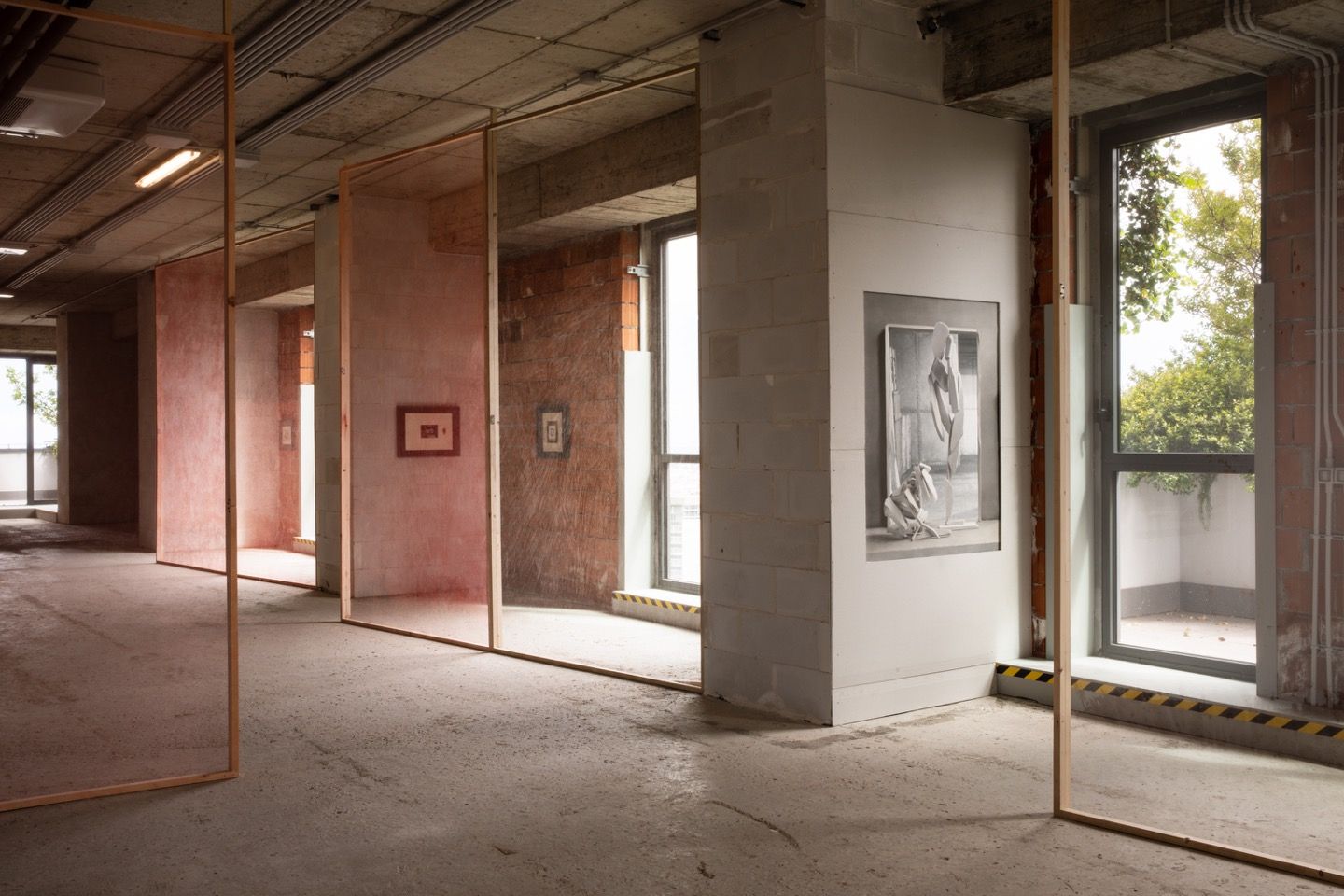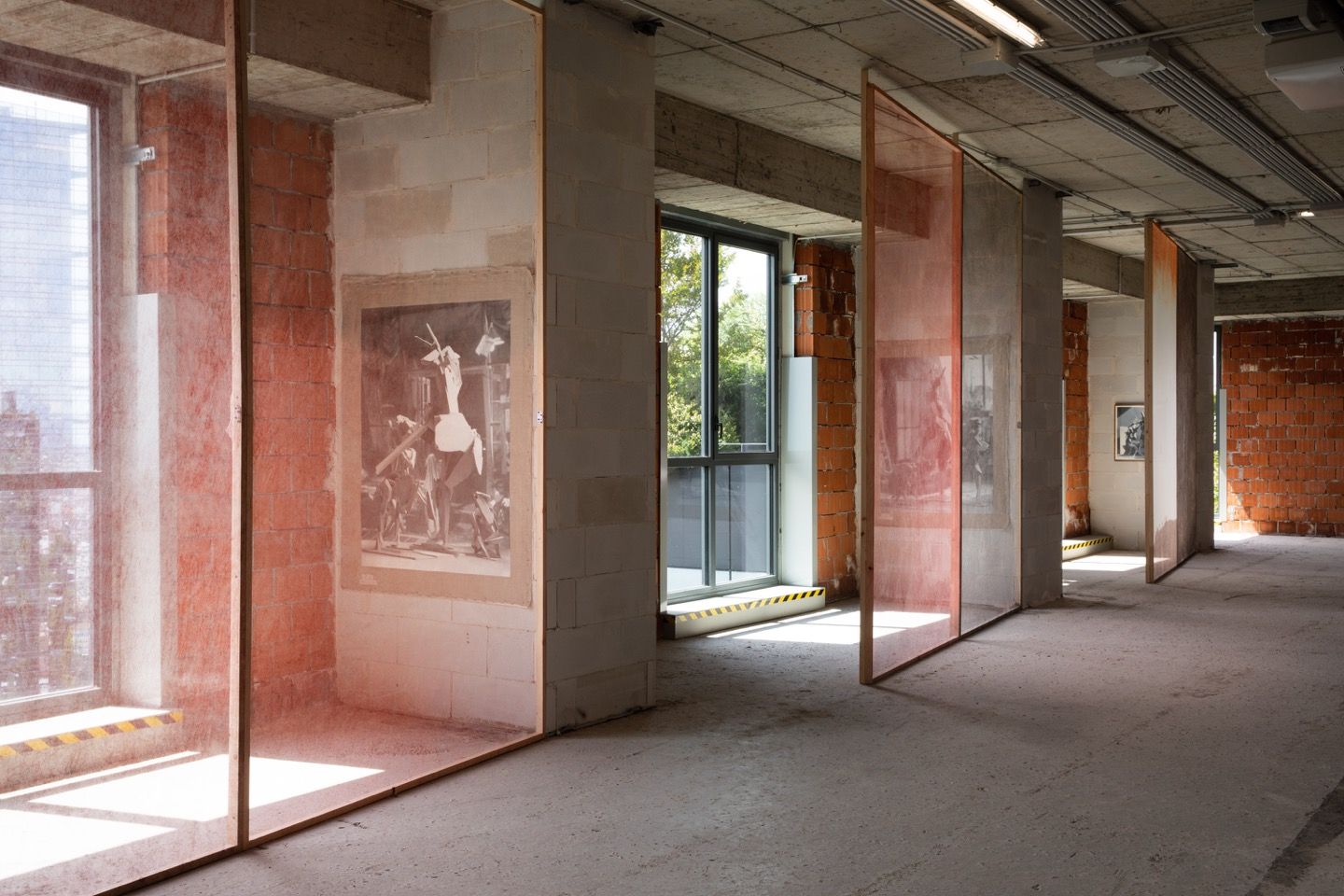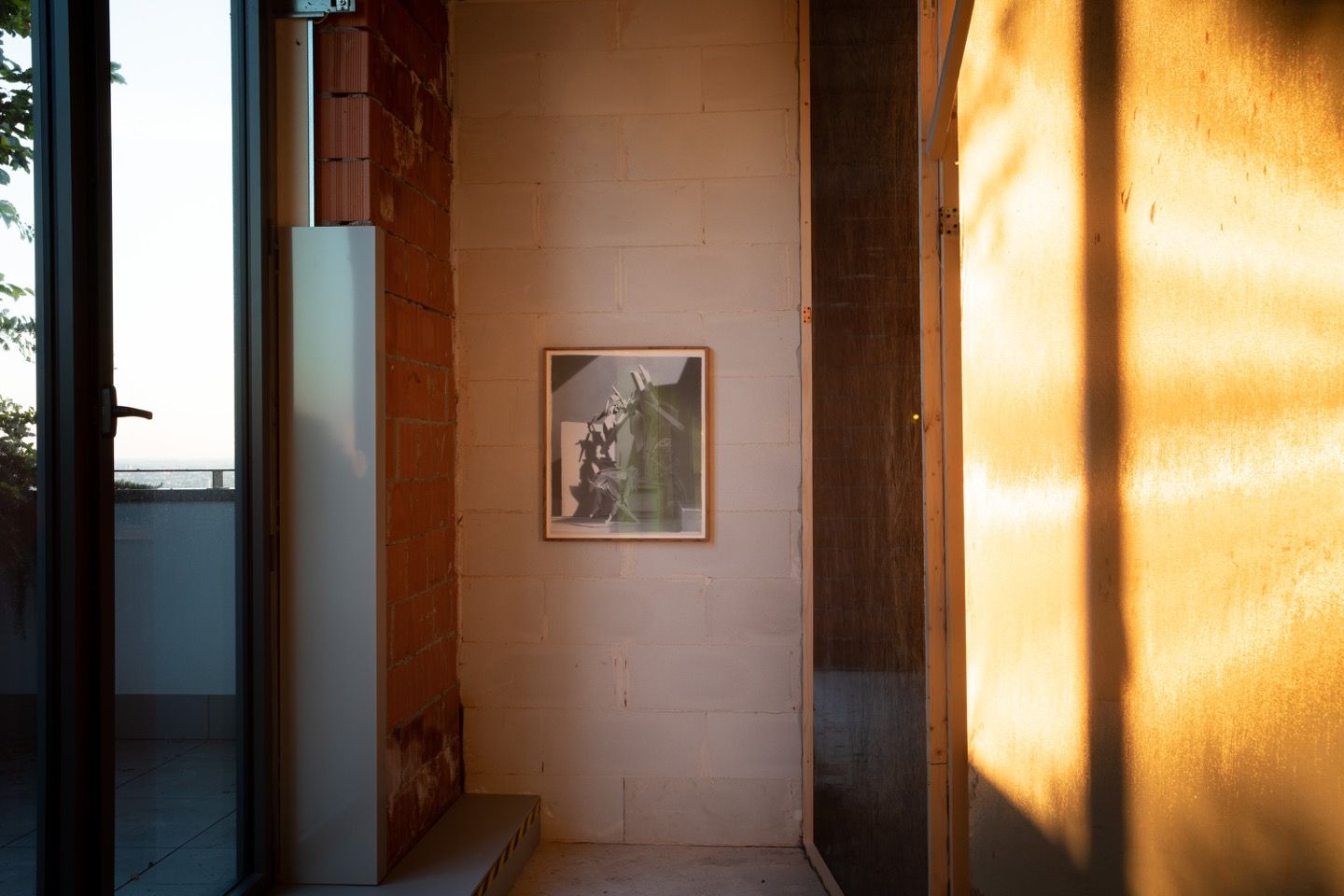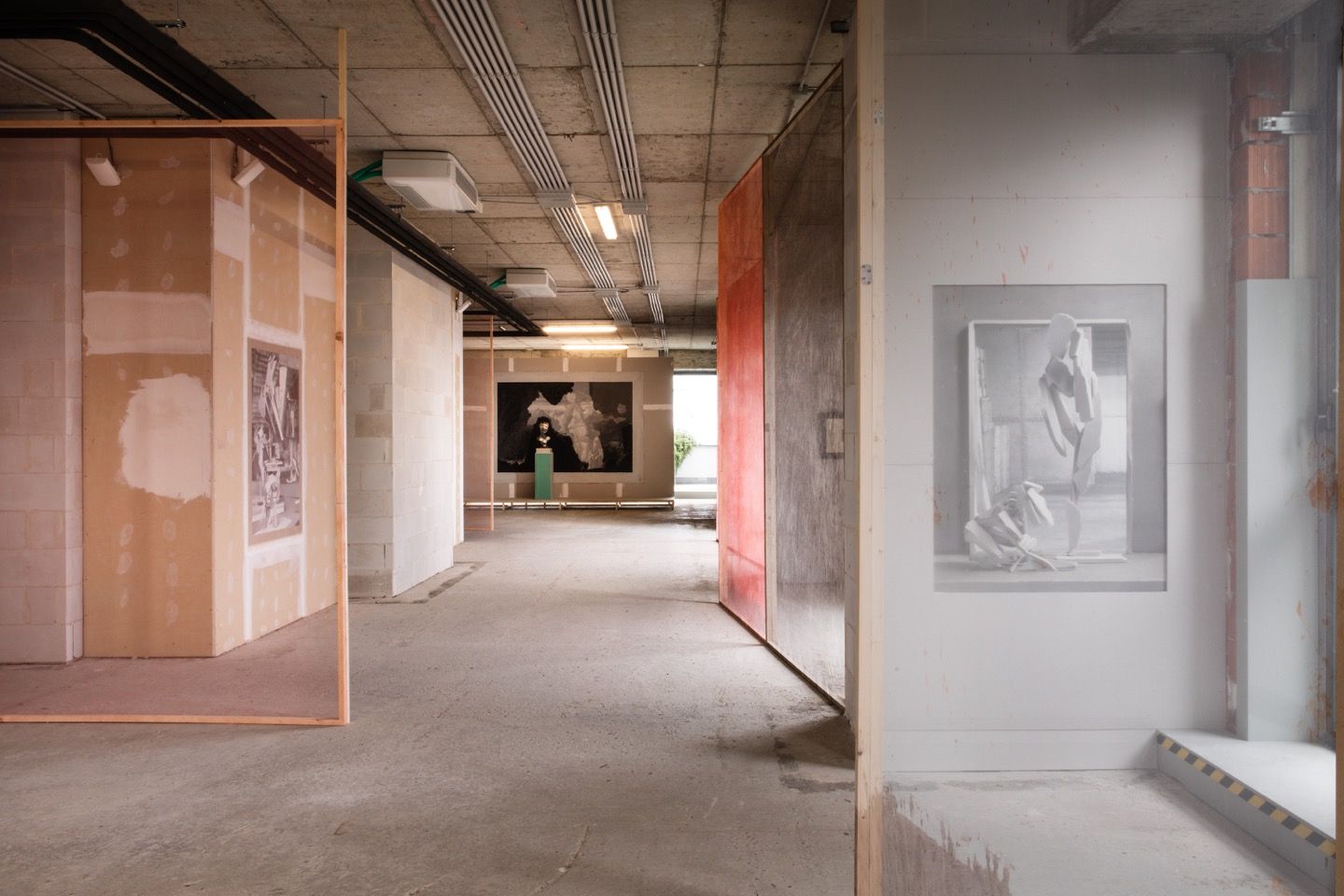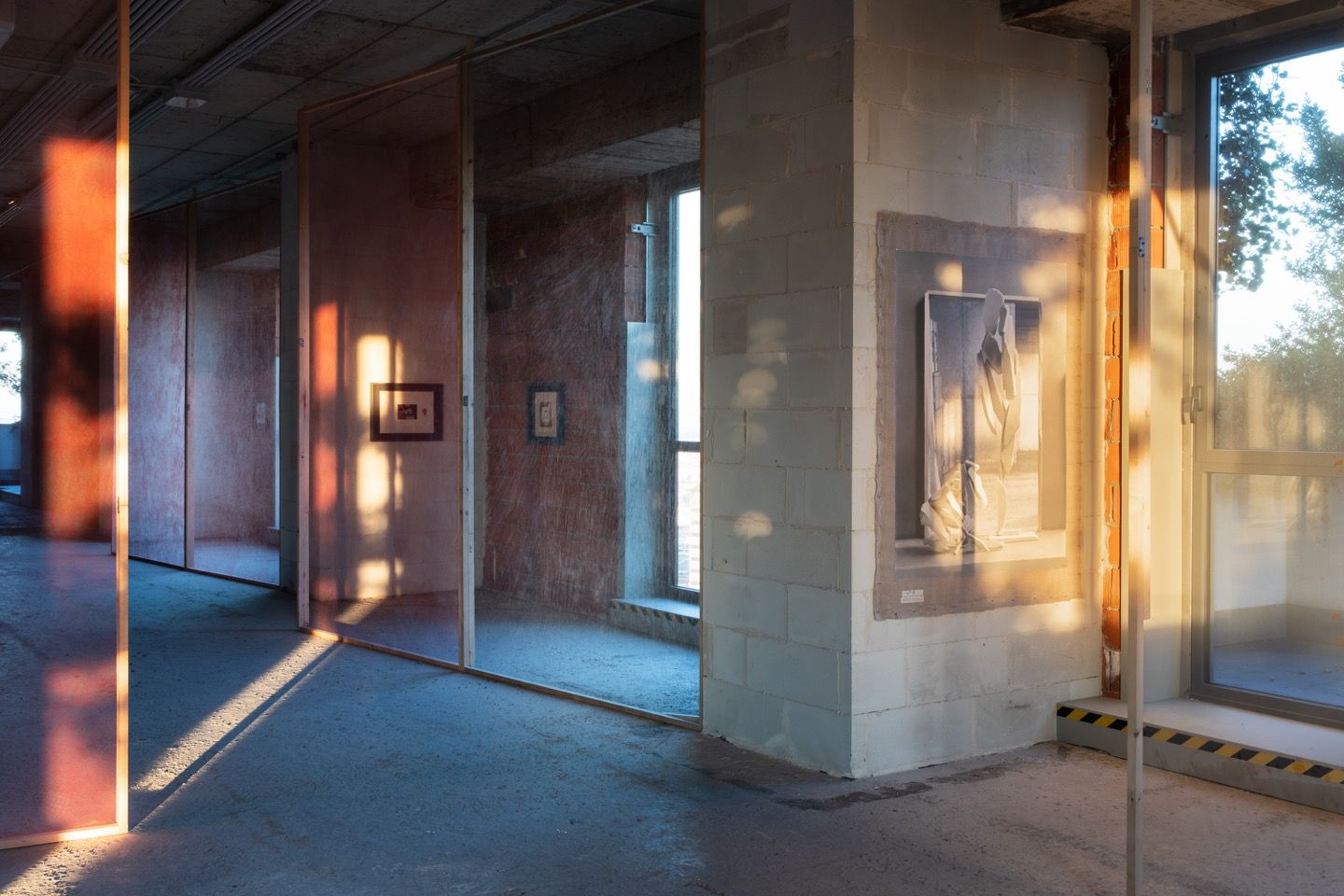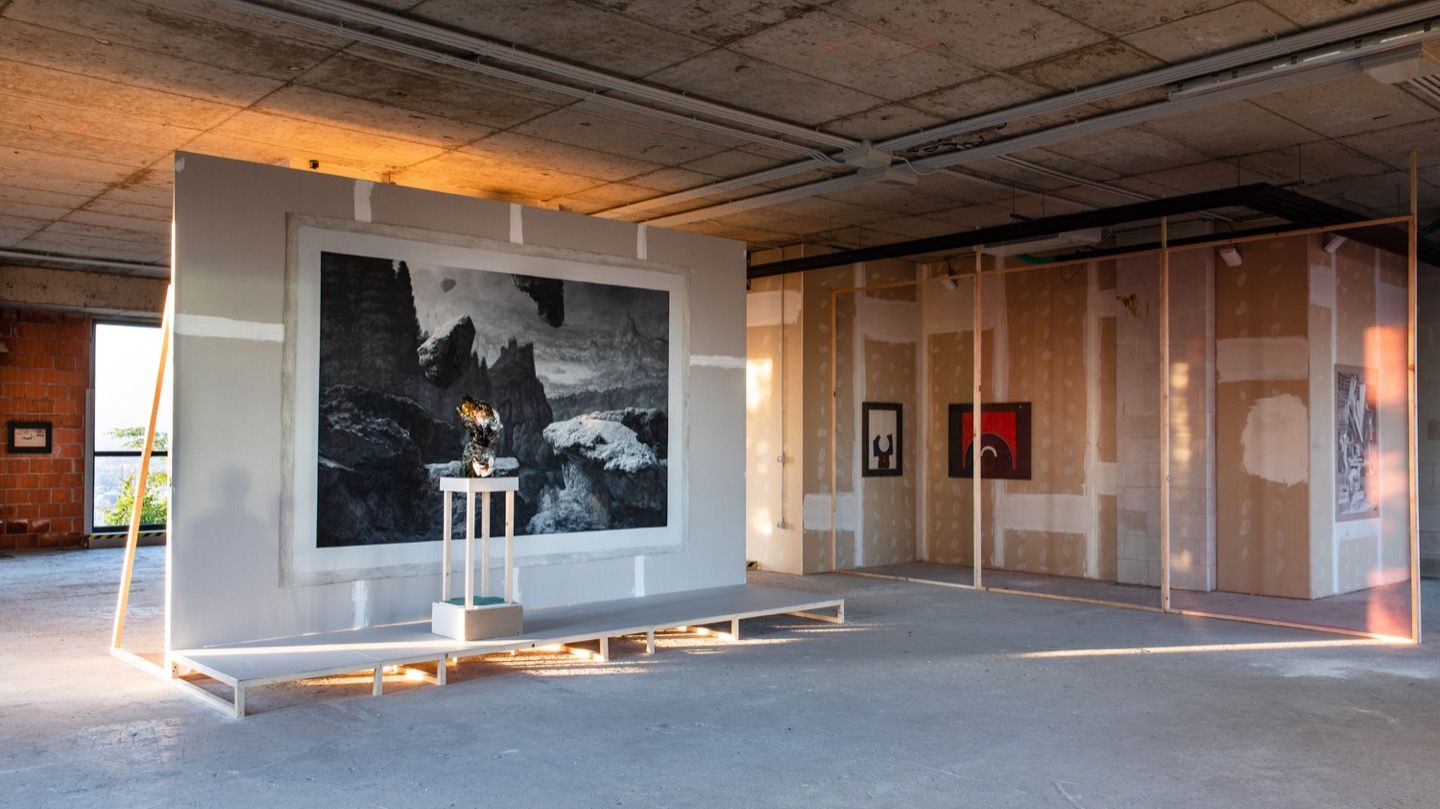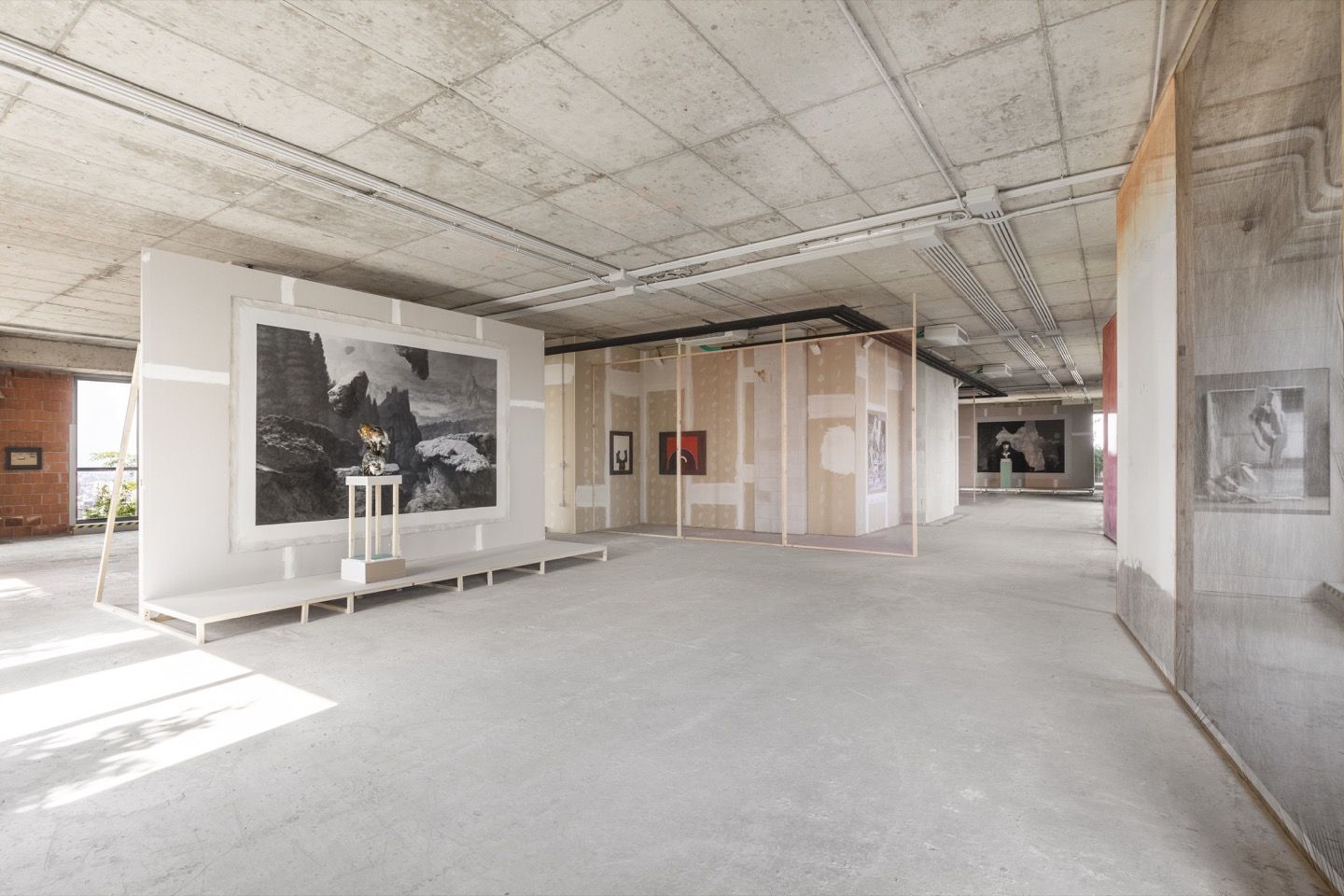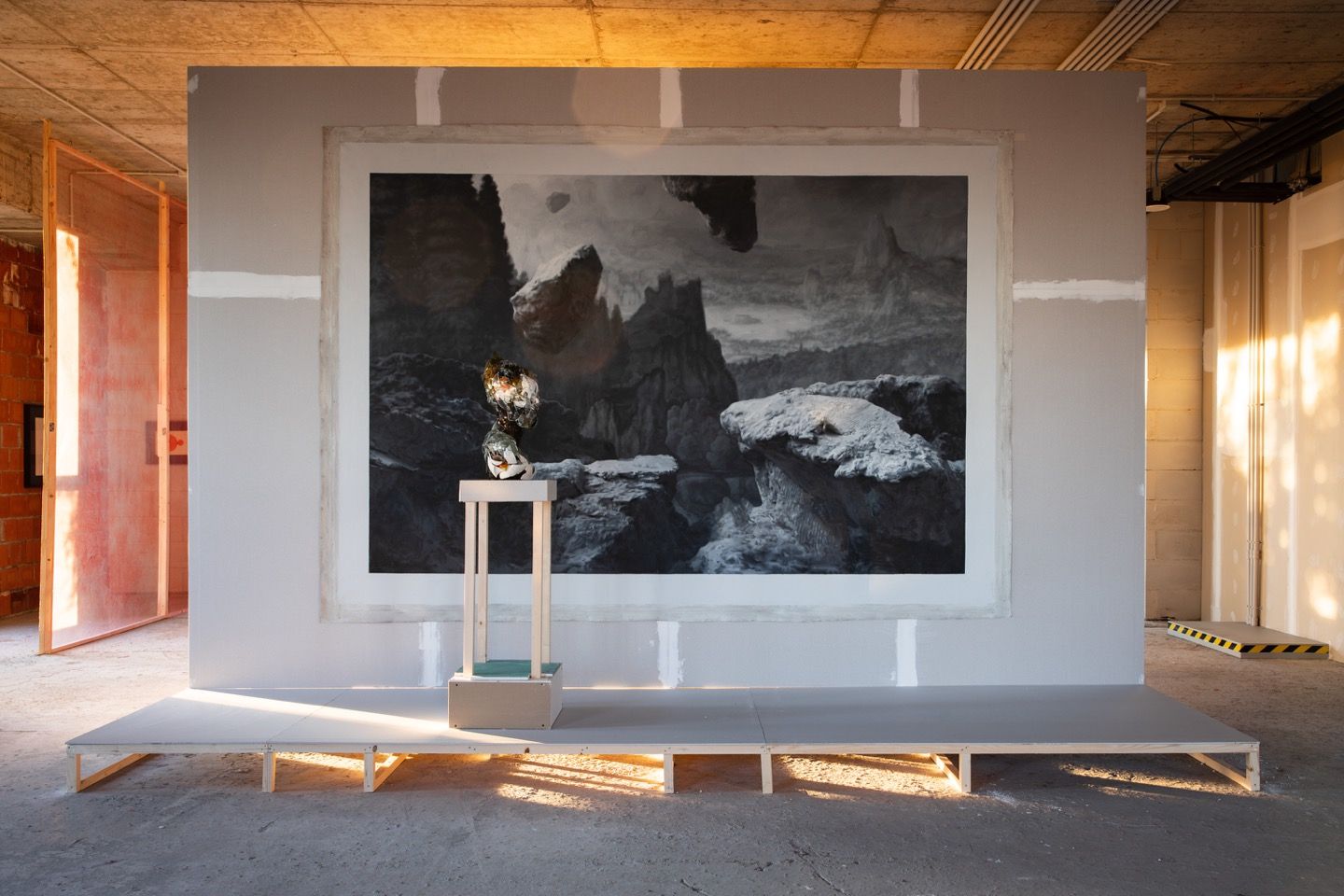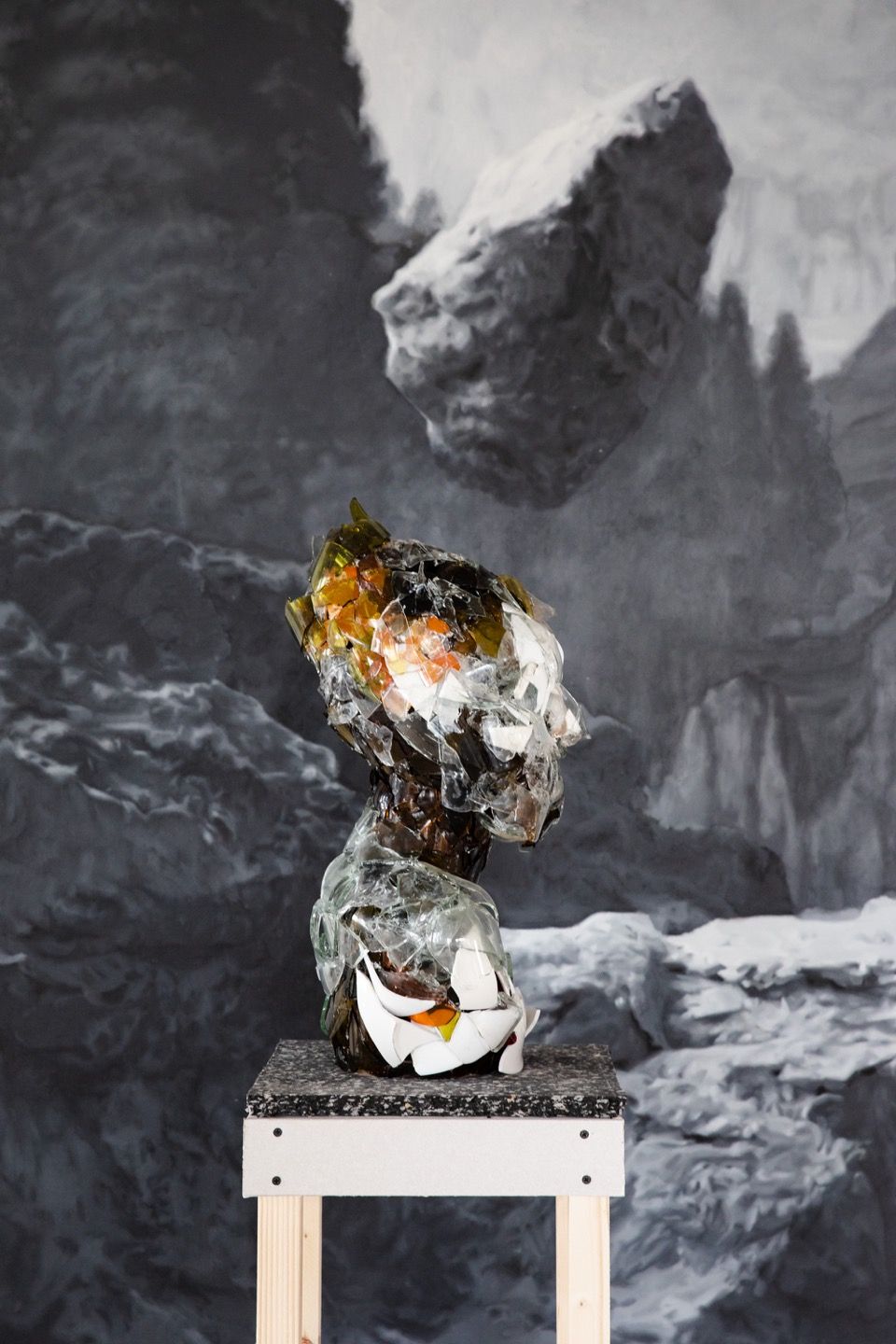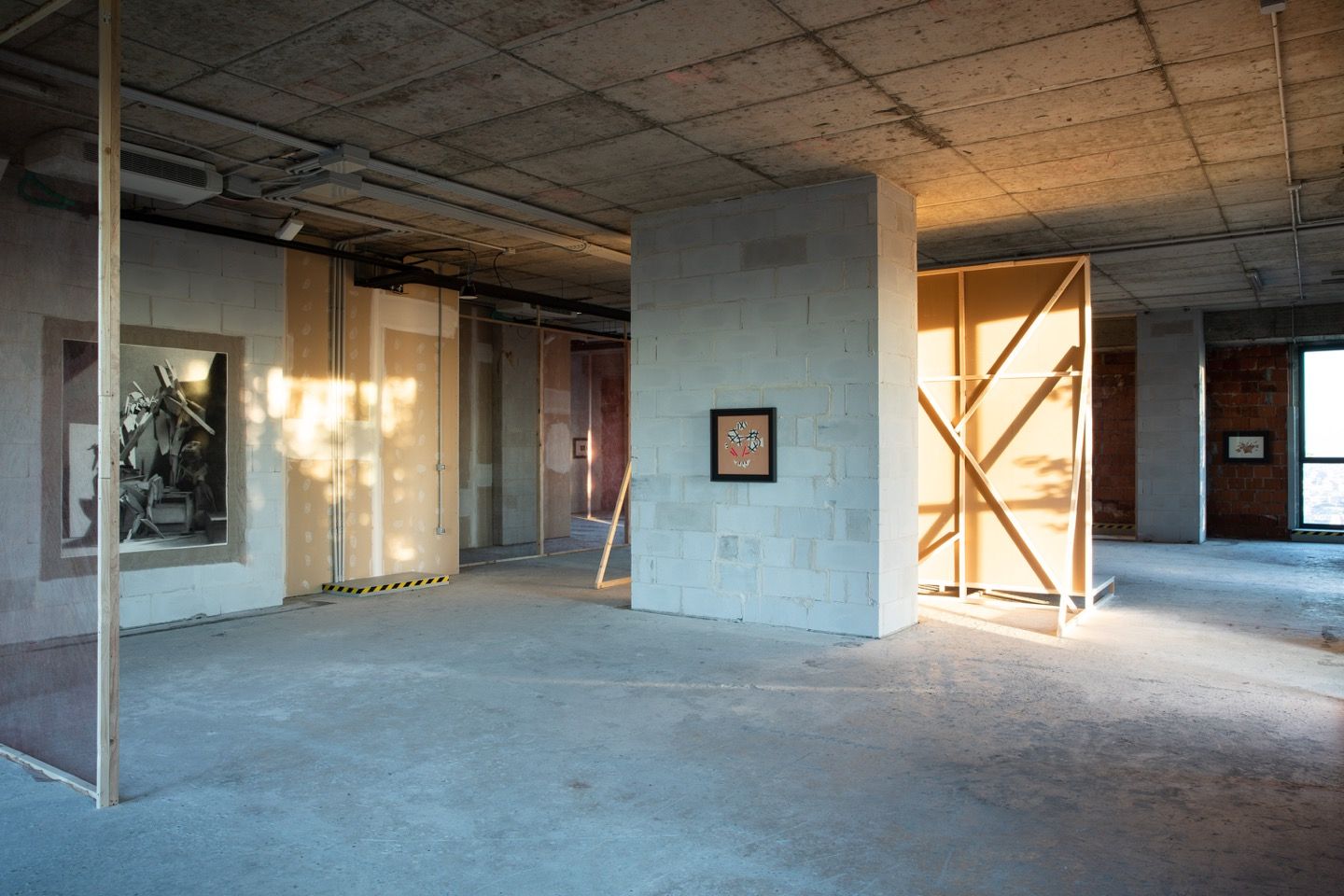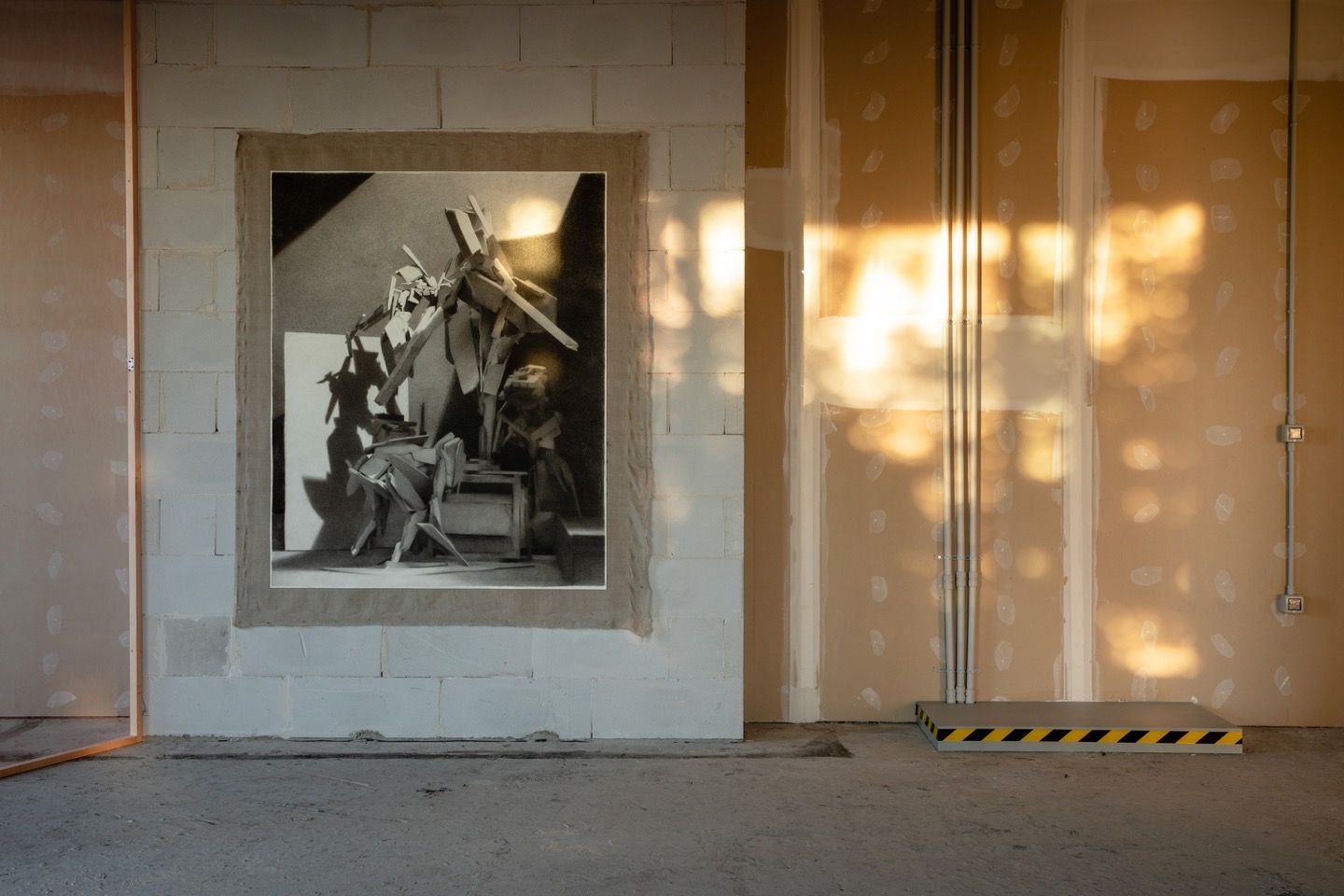Bosco Verticale via Gaetano de Castillia 11 - top floor, Milano
May 11th - 18th, 2019
BACK TO COLLAGE / NICK DEVEREUX AND ITALIAN MASTERS OF THE 20TH CENTURY
Case Chiuse #07 by Paola Clerico
Curated by Irina Zucca Alessandrelli / Collezione Ramo
The collage was a very much loved medium throughout the last century, and one that makes its appearance on the arts scene with Cubism and the Italian Futurists, before being widely adopted also by Dada and the Surrealist movements. The name originates from the French verb coller, and refers to works largely made up of cuttings of paper, newspapers, and photographs laid over a background image with the use of glue. Exploiting the contrast effect, the collage is a useful device for altering a scenario on the basis of given visual contents, like a window looking onto another world. It allows us to compare images from different and distant contexts, offering a simile, a metaphor or a contradiction.
Ultimately, it is a particular methodological practice, precise but somewhat slow to produce, leading to the creation of new meaning through an element of surprise.
The collage may often be combined with drawing to give rise to an aesthetic effect, to make the glued part stand out from the background, or to highlight certain elements according to an often playful logic, with a certain disregard for the rules of artistic representation in the traditional sense.
In Italy in the 1950s, the collage was represented somewhat on the side lines of the art scene, but remained in use with a certain degree of continuity up until the 1980s.
This exhibition brings together a number of paper collages from the Milanese Ramo Collection (Italian drawings from the 20th century) featuring the recent works of the contemporary artist Nick Devereux, produced by Case Chiuse for this dialogue between past and present, situated on the top floor of the Bosco Verticale, affording an unequalled view of 360 degrees over the city.
Following the chronology of the works on show, we might start out from the 1954 composition with thousand lire notes by Giulio Turcato (1912-1995) up to the cityscape with crossword skyscrapers of 1962, in the typical style of the advertising production of Pino Pascali (1935-1968). The display then moves on to the powerful red and blue paper with tempera and crayons by Emilio Scanavino (1922-1986) from 1966, followed by his 1968 paper work, in which a printed orange globe stands next to a second glued one, both bearing rapid strokes of black pencil. It is interesting to note how over the same period, the artistic offerings in Italy were highly diverse in terms of both style and content, yet all of great freshness and originality. Around the end of the 1960s, the collage was also to be found in the elaboration of the languages of cinema and photography as in the work of Mario Schifano, who coupled a series of landscapes, like on a storyboard, with his photographs of female nudes, as well as an interior with one of his iconic painted palms. At the same time but in different parts of Italy, the revolutions of other artists were also underway.
In 1969, Bruno Munari (1907-1998) made use of the collage to pay homage to the 19th-century mathematician Giuseppe Peano, who theorised the space- filling curve, providing authentic poetic visions of his favourite geometric pattern. He also produced the Ricostruzione teorica di un oggetto immaginario(1970) with which, starting from residues of paper cuttings, Munari ironically endows the creative process of reuse with scientific clout. Around the same time, Mirella Bentivoglio (1922-2017) paid homage to the theorist of Futurism Tommaso Marinetti with reference to Cartacei, a character from her novel Gli Indomabili, presenting a triangular figure with an egg-head on which an book rests, open downwards. Bentivoglio then makes use of a newspaper cutting, referencing the Cubist and Futurist practice in order to contentiously introduce the theme of consumerism and the housewife, in the work Il cuore della consumatrice obbediente. Cuttings from magazines as miniatures may be found in the Indian ink drawings by Gianfranco Baruchello (1924), offering a proliferation of micro-universes to be explored with a magnifying glass. Strongly material, almost a declination of the principle of chance so much celebrated by the Surrealists, is the work of Roberto Crippa (1921- 1972), in which a piece of found cork bark forms the base for a totem
of cuttings, on which the artist intervenes with light lines of Indian ink that complete the composition.
Clinically sharp and clean geometric patterns characterise the collage by Giuseppe Uncini (1929-2008), who reasons on the creation of the series titled ‘Ombre’, carried out between 1972 and 1978, imitating the hues
of reinforced concrete in his sculptures.
In the 1980s, Alighiero Boetti (1940-1994) saw the collage as a way to valorise his beloved theme of the contrast between terms, of the pair of opposite concepts, of which the series I Vedentirepresents an example. In the form of postcards complete with postage stamps, or layered tissue paper in his Eterno dilemma tra contenuti e contenitori(‘Eternal dilemma between contents and containers’) which provides the title for his work, the artist makes an antithetic reference to the perceptive experience of the blind man reading raised letters that form the words ‘I vedenti’ (‘The Sighted’), obtained here with a punch stamp used as a signature which makes holes in the paper.
A separate reasoning (one which underpins the idea behind this show) may be applied to the three collages by Giulio Paolini (1940) from the 1970s which – with the use of graph paper and the photographed image – identify the work with the elements it is made up of, linked to everyday artistic practices (paper, pencils, the ruler and the camera). In this impetus towards an ideal representational neutrality which does not reflect creative subjectivity, Paolini chooses the square and the rectangle to give life to a kaleidoscopic duplication of images that symbolise a time dimension prior to the work, one that it derives from, in a white, timeless square in a perpetual stage of development. The artwork and photography, as the dominant technology in that given historical moment, are rooted in an ancient archetype of art: drawing. The right hand is photographed while the Polaroid produces a grey reproduction of it; it is surrounded by a white frame, in turn held in the other hand. The left hand of the photographer represents a moment following the image that it is holding. This collage by Paolini (1976) was to become the emblem of the artistic form of the day: already gone in the moment of being visualised and on the way towards its next transformation.
The collage as a bridge between the past and the future, a moment of space-time passage, is the more profound sense behind this medium, demonstrated also by the work of Nick Devereux. Born in 1978 in Panama and currently resident in London, Devereux has always viewed collage in terms of new birth, representing the necessary input for a new search for meaning. For Devereux, collage means setting off along a new path, yet one mindful of that already travelled. Having used this medium a great deal in the past, the artist evolved his technique, transforming it into a way of thinking beyond the use of glue. These recent works, in fact, feature nothing glued, but they still exploit the same overlapping of images, albeit ones produced by the use of pastel drawing. The collage is therefore present only as a mental procedure which positions his drawings over movie stills featuring artists studios. These references investigate a bourgeois mentality in the 20th century which stereotyped the ‘Bohemian’ life of the artist. In specific terms, Devereux draws inspiration from the British satirical film The Rebel (Call me Genius in the American version), a 1961 comedy featuring the popular actor Tony Hancock. Devereux uses scenes from the studio of the painter playing the lead role in the film, situated right in the heart of the Montmartre neighbourhood and overlays his drawings onto this scene. Like a diorama, he depicts his own wooden sculptures within the set of the film, using the movie’s backdrop like a maquette, resulting in an image that is simultaneously integrated and disassembled.
The real contents of his studio are thus placed on the stereotyped set of the film, exasperating the contrast between artifice and artistic reality in a sort of matryoshka of meanings. For the exhibition, the artist builds a large- scale installation that choreographs his drawings, paintings and sculptures made of shards of glass within a theatrical arrangement of tulle panels, painted by him to offer a range of chromatic effects. The artist thus paves the way for a second overlaying process: those between the romantic and fabled crucible of artistic creation as found in the comedy film, and the surrounding elements recreated on the basis of his real everyday practices. This display, especially designed to screen and colour the light from the great windows on the 26th floor of the Bosco Verticale features the alternation of his own ideal collages and those of the Italian artists of the last century, providing a prolific stratification of gazes and references.
Irina Zucca Alessandrelli
in collaboration with
